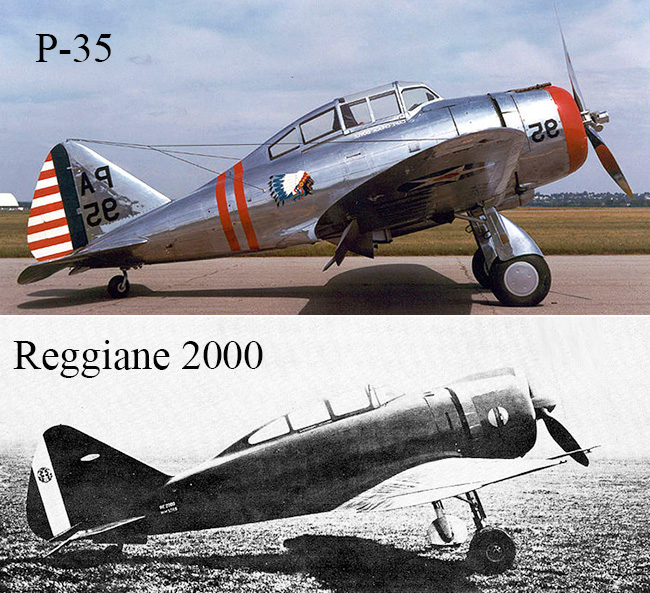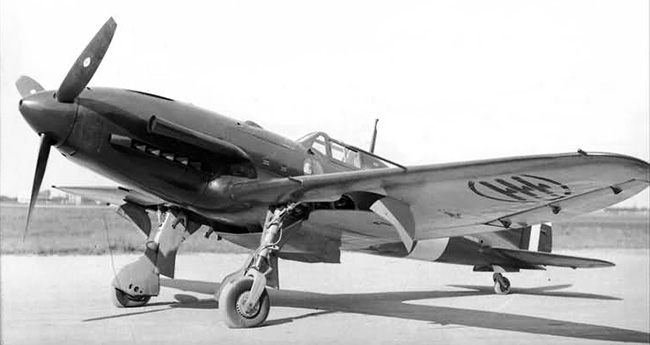Airplane Genetics
Today, airplane genetics. The University of Houston's College of Engineering presents this series about the machines that make our civilization run and about the people whose ingenuity created them.
Our machines evolve rather like living creatures. Take WW-II fighters - you know: Spitfires, Mustangs, Messerschmitts, Zeros. Italy also built some little-known, but very good, planes during the War. So let's trace the lineage of one of those that goes back, not to other Axis powers, but to the US and Russia.
Aviator Alexander Seversky fled the Russian Revolution to America. Here he took up airplane design and set speed records. Then he started an airplane company. He made the P-35 fighter plane - a neat little single-seater with a radial engine. Here was a preview of how the great WW-II fighters would look.
The Italian Reggiane factory had arranged to license and build American planes. So they set out to make P-35s. (Seversky, a better salesman than manager, had really drawn American ire when he sold his planes to prewar Japan. He was soon pushed out of his company. Then it morphed into Republic Aircraft.)
Anyway, once they had Saversky's design, Regianne engineers tinkered and improved. They built the Reggiane Model 2000 fighter. Outwardly, it looked like the now-obsolete P-35. But it became a hot sale item. Reggiane sold 70 to Hungary, 60 to Sweden. Then, after WW-II had begun, an order for 300 from Great Britain. A few weeks later, Italy joined with Germany; so that order was never filled.

Now three Italian airplane builders - Reggiane, Fiat, and Macchi - competed. As they did, their planes improved and began converging on a genetic design that would be common to all the late fighters on both sides. Wide radial engines gave way to sleek liquid-cooled ones. Speed and firepower increased.
So, how did Reggiane's planes fare? Well, they consistently arrived too late. The 2000s were shuttled off to ground troop support, here and there. And later models suffered similar fates. Reggiane's last fighter, Model 2005, was as good a plane as flew in the war. But they'd made only 48 of them by the time Allied forces occupied most of Italy. A few of those planes did some damage to American bombers; but they did little more. (And a jet fighter model still lay on Reggiane drawing boards.)

The Reggiane 2005, with its liquid-cooled inline engine, had not only the same general appearance as the advanced E109, P-51, and Spitfire, its performance was also comparable to those last and best WW-II fighters.
What, then, do we read from all this? It's an old story. War provided an outlet for a lot of creative engineers. Invention pursued necessity - as it always does. It's not the other way around.
A few of those primitive American P-35s were chewed up in a losing battle against the Japanese in the Philippines. Others served for liaison and training. Their Reggiane progeny on the other side were likewise always too little and too late. By the time the fully-evolved 2005 entered combat, it was engineering at its best - a last flicker of genius serving that evil lost cause. But look at the way its DNA was woven through both sides of that war - Russia, America, Italy, Hungary, Sweden, Britain ...
It would seem that our machines transcend political boundaries just as surely as our human DNA does.
I'm John Lienhard at the University of Houston, where we're interested in the way inventive minds work.
G. Punka, Reggiane Fighters in Action. (Color by Don Greer, Illustrations by Ernesto Cumpian and Andrew Probert) ((Carrolton, TX: Squadron/Signal Pubs., Inc., 2001): Aircraft No. 177.
See the Wikipedia articles on Alexander P. de Saversky, Saversky P-35, Reggiane 2000, Regianne 2005, and others in the Regianne 2000 series. This You-Tube Video provides views of the relevant WW-II Italian military aircraft: https://www.youtube.com/watch?v=i2fPjrUsNIA
All images courtesy of Wikimedia Commons.
This episode was first aired on Jan 13, 2013